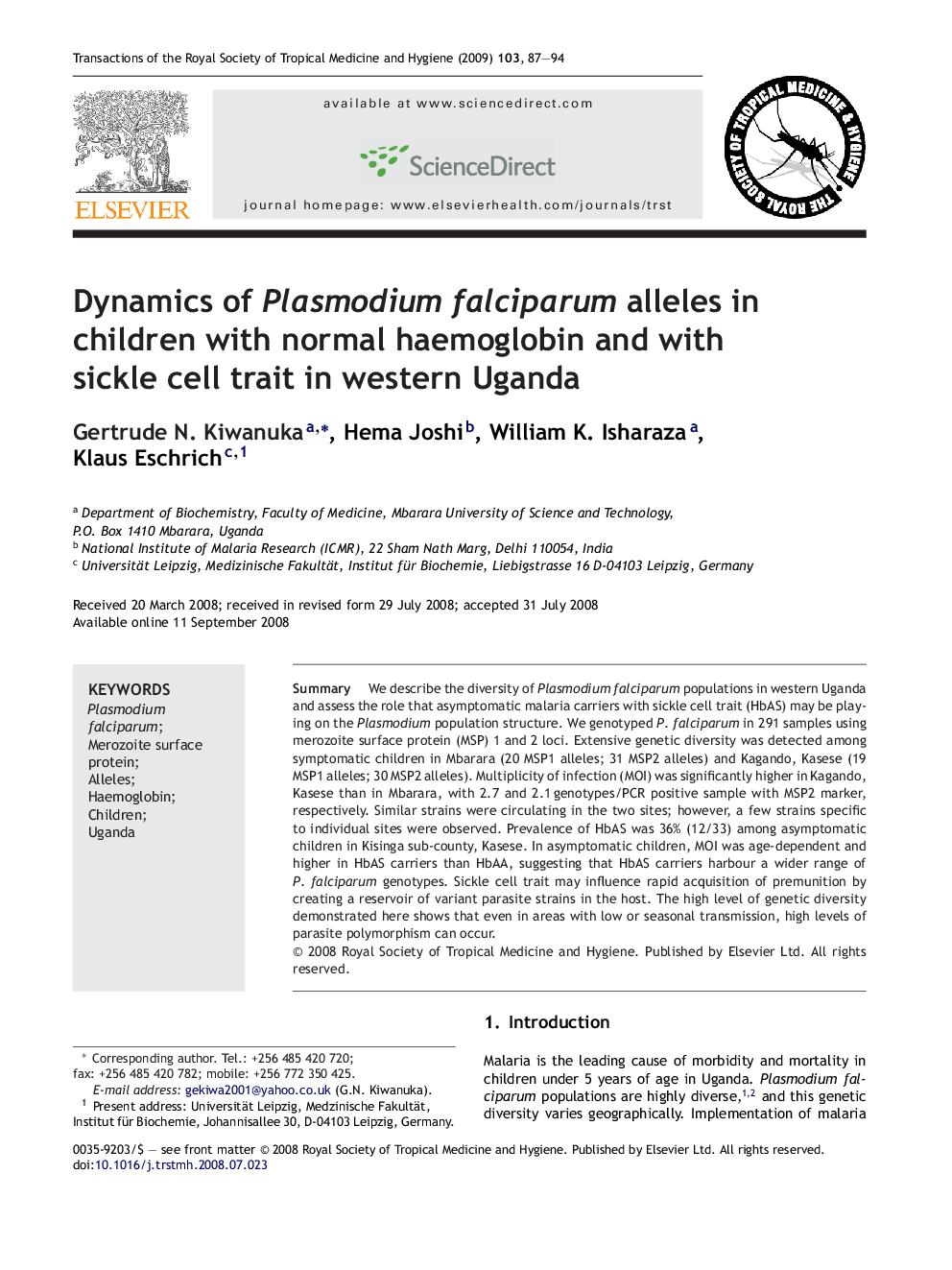| Article ID | Journal | Published Year | Pages | File Type |
|---|---|---|---|---|
| 3420672 | Transactions of the Royal Society of Tropical Medicine and Hygiene | 2009 | 8 Pages |
SummaryWe describe the diversity of Plasmodium falciparum populations in western Uganda and assess the role that asymptomatic malaria carriers with sickle cell trait (HbAS) may be playing on the Plasmodium population structure. We genotyped P. falciparum in 291 samples using merozoite surface protein (MSP) 1 and 2 loci. Extensive genetic diversity was detected among symptomatic children in Mbarara (20 MSP1 alleles; 31 MSP2 alleles) and Kagando, Kasese (19 MSP1 alleles; 30 MSP2 alleles). Multiplicity of infection (MOI) was significantly higher in Kagando, Kasese than in Mbarara, with 2.7 and 2.1 genotypes/PCR positive sample with MSP2 marker, respectively. Similar strains were circulating in the two sites; however, a few strains specific to individual sites were observed. Prevalence of HbAS was 36% (12/33) among asymptomatic children in Kisinga sub-county, Kasese. In asymptomatic children, MOI was age-dependent and higher in HbAS carriers than HbAA, suggesting that HbAS carriers harbour a wider range of P. falciparum genotypes. Sickle cell trait may influence rapid acquisition of premunition by creating a reservoir of variant parasite strains in the host. The high level of genetic diversity demonstrated here shows that even in areas with low or seasonal transmission, high levels of parasite polymorphism can occur.
